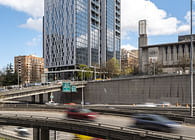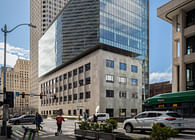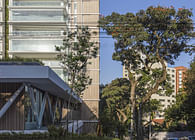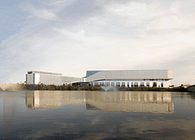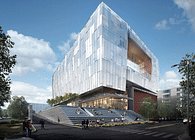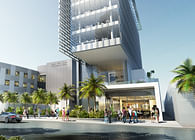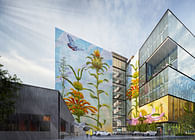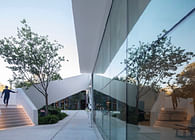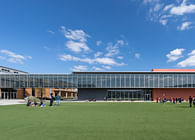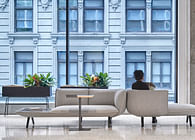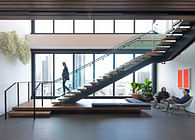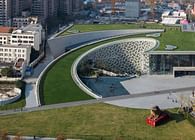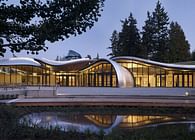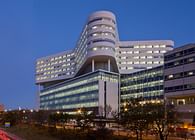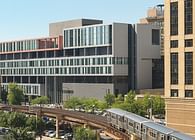
Global
Perkins+Will's Atlanta office is an adaptive reuse of a 1986 office structure transformed into a living laboratory and educational tool of sustainable technologies. By a thoughtful, interdisciplinary approach, the renovation supports the client’s environmental commitment to its staff, clients and community, its on-going pursuit of design excellence and its value to society.
As a multidisciplinary design firm, Perkins+Will is committed to design excellence and sustainability in both work and practice. Our new home had to reflect our values by meeting the highest levels of sustainability. Our designers needed an interdisciplinary, integrated work environment that fostered creative, inspiring design and served as a “living lab.” The project’s goal is to meet the 2030 Challenge by reducing greenhouse gas emissions by at least 60%, achieve LEED® Platinum certification, conserve water and eliminate the use of toxic and hazardous substances in building products.
To achieve our project vision and maintain design excellence, Perkins+Will created and led an interdisciplinary design team including interior design, branded environments, urban design, landscape architecture, contractor, sustainability and structural and MEP engineering. As the project moved forward, each discipline collaboratively addressed how to meet our goals.
The best opportunity for positive environmental impact was to select an existing building, retain as much of the structure as possible and upgrade and optimize systems such as exterior glazing, HVAC, lighting and water. In order to reduce the amount of demolition and construction waste sent to the local landfills, we set a target that 75% of waste generated would be reused, repurposed, recycled or otherwise diverted. Perkins+Will omits at least 1% of our firmwide hours pro bono to organizations needing design services. By reaching out to many of these organizations, needs for furniture and materials were matched with salvaged items from the building’s previous build-out. As a result, 80% of demolition and construction waste (60 tons) was successfully diverted from landfills to more than 20 local nonprofit organizations.
With the previous office only a block away, the Perkins+Will Atlanta office recognized the importance of staying in the neighborhood. The pedestrian-oriented Arts District is easily accessible from in-town neighborhoods and the Arts Center Transit Station and offers convenient access to shopping, dining and cultural venues. The location is also an accessible destination for 30% of our employees who commute by walking, bicycling and using mass transit and carpooling. To continue our focus on alternative transportation in a car-dependent city, design considerations included space for 12 bicycles within an enclosed and secure storage area along with showers and lockers to refresh after the commute.
1315 Peachtree Street was initially designed with two curb-cuts on Peachtree Street and a semi-circular drive leading to a street-level parking garage. This was hazardous and was an underuse of valuable street-level real estate. The Perkins+Will design team removed the curb-cuts and created a permeable, civic plaza for the client, building tenants and visitors to provide an active street presence.
By eliminating a third of the building’s parking, a new 10,000+ square foot tenant space with Peachtree Street frontage was created for the Museum of Design Atlanta (MODA). The new tenant’s presence not only strengthens Midtown’s arts community but also helps the local economy where Midtown’s vacancy rate is over 20%.
A variety of spaces are housed at 1315 to give us room to design. The design accommodates heads-down work at individual desks, working at group tables in each bay, informal spaces, conferencing spaces, office-wide Wi-Fi access, team rooms and project rooms. The variety of space types promotes interaction and communication that is needed for dynamic interdisciplinary design. The free span structure, daylight and views are visual links to the outdoors and Atlanta. The redesigned west side of the building from the existing tiered structure allows for each pair of the our floors to interconnect. More than 60% of team rooms and touchdown space are entirely demountable and designed to be deconstructed and repurposed. The optimization of the existing concrete structural frame introduces a new exterior terrace on the fifth level allowing office activities, meetings and functions outside with spectacular views of the High Museum of Art and the Midtown skyline.
Status: Built
Location: Atlanta, GA, US
Firm Role: Architect



